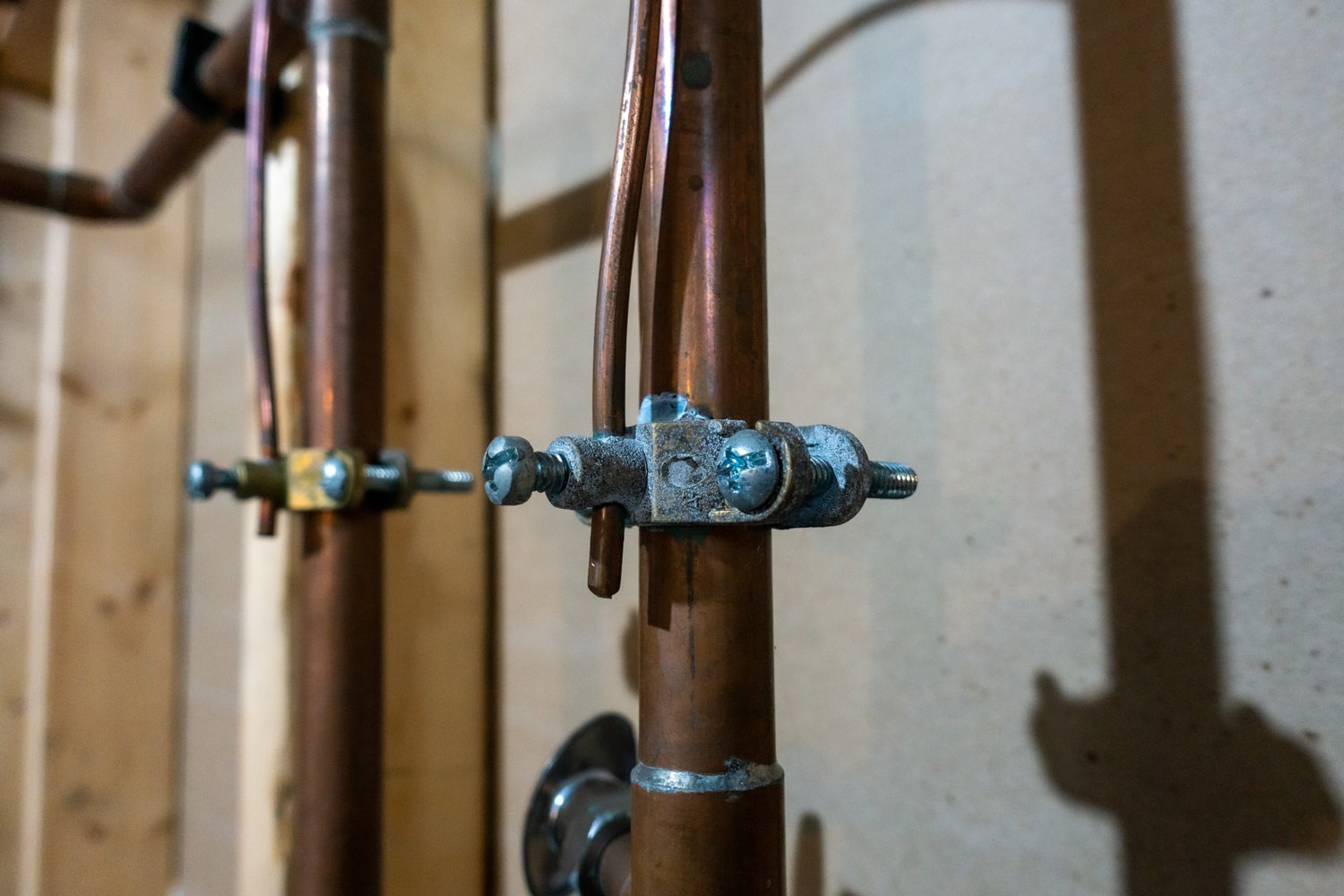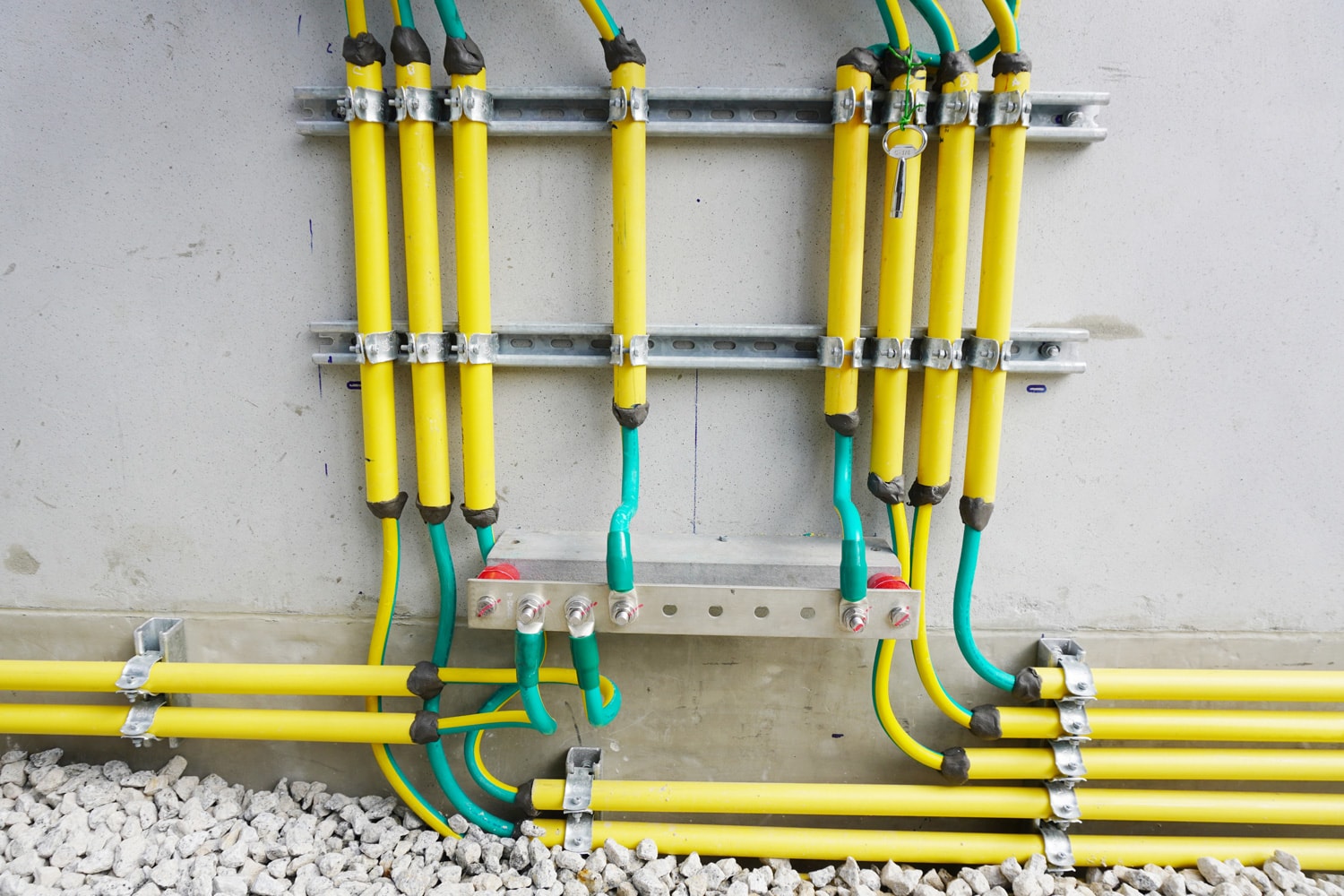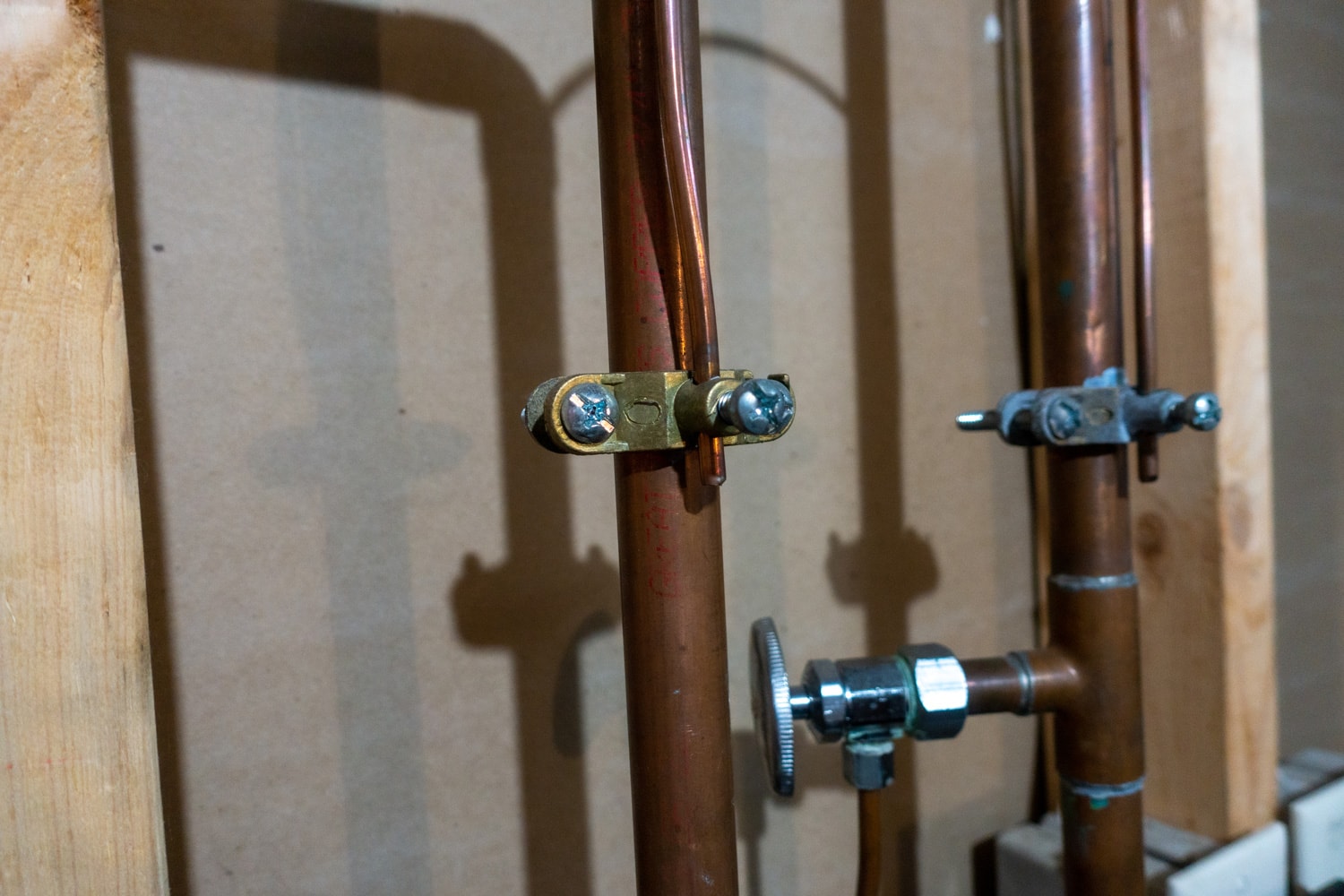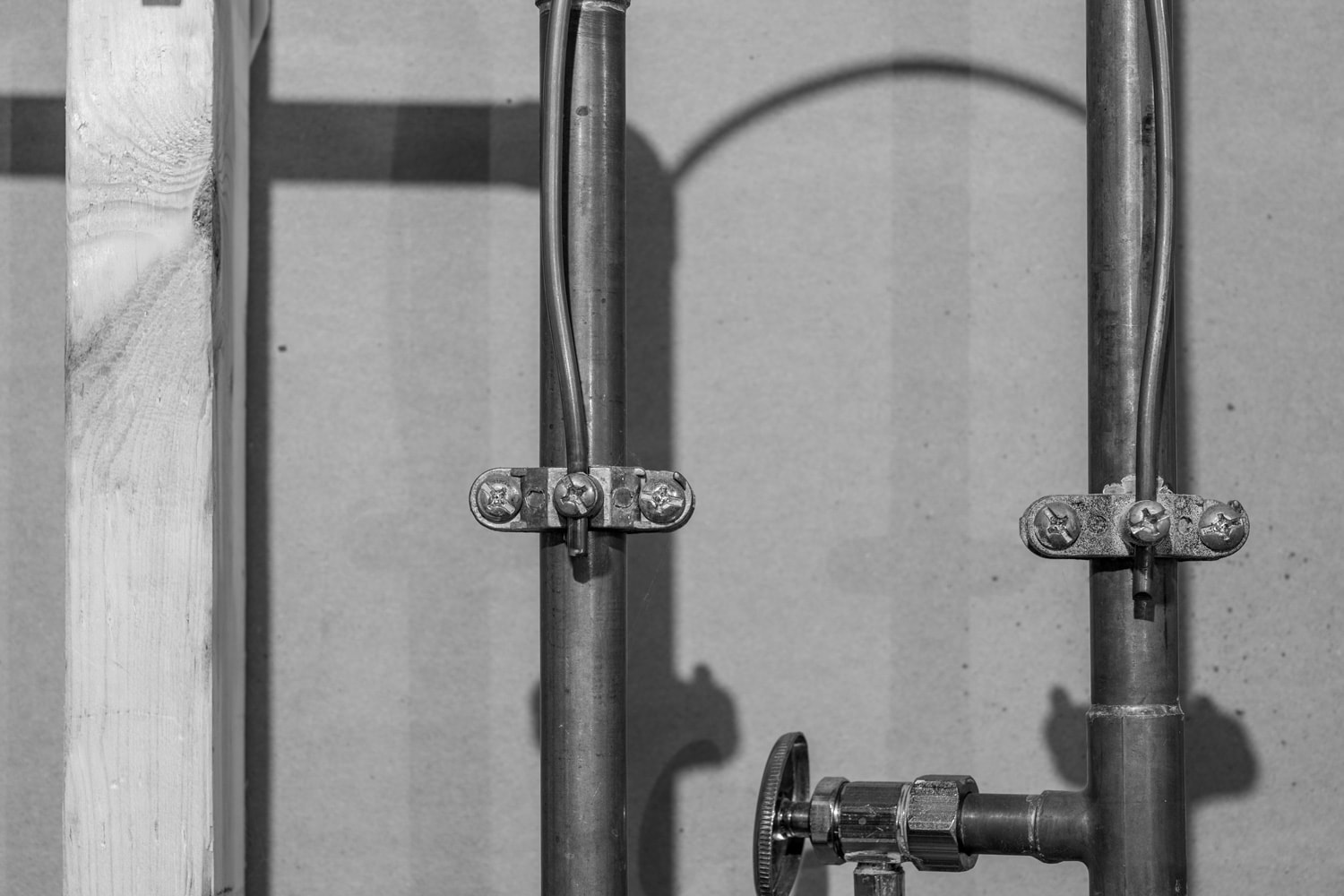If you have metallic water pipes going inside your home, one main concern is the possible electric hazard that can happen around them. To address this concern, you need to use an earth cable to divert the electric current to the ground. You may be wondering what size of earth cable should be used for your water pipes. We have researched this topic thoroughly for you, and here is what we have found!
For the main bonding of service pipelines, such as water, gas, and oil, the size of the earth cable to be used should be 10 mm thick. Metallic water pipes conduct electricity well, and a thick earth cable is necessary to divert electricity to the ground.
The earth cable should also be of the correct size compared to the earth rod used in bonding. An incorrectly sized earth cable can lead to a city inspection violation.
Bonding your water pipes is important to ensure the safety of everyone in your home. Read on as we tackle the details of how to bond your water pipes using earth cables, along with other useful information. So without further ado, let us dive into this topic!

What Is An Earth Cable And How Is It Used For Bonding Water Pipes?
An earth cable is a thick cable that connects your service pipelines to the earth terminal of your home. A fault current, by its nature, would find its way to the ground. This current would take the path of least resistance toward the ground.
With an earth cable connected to the ground terminal, the fault current will pass through this instead of toward the ground. It is therefore recommended for the earth cable to be thick enough for the electricity to pass through this cable instead of yourself to avoid electrocution.

The service pipelines into your home, including your water pipes, are usually made of metal. If there's a short circuit in your appliances and you happen to touch your metallic water pipes, you may get electrocuted.
This is due to the difference in voltage between your water pipe and the faulty equipment, allowing for the current to pass through you.
An earth cable is therefore necessary to equalize the difference in voltage between your water pipes and other metallic equipment, leading all possible fault currents towards the ground terminal. The process using the earth cable is commonly known as bonding.
Do Water Pipes Need To Be Bonded?
According to NEC 250.104(A), only metallic water pipes need to be bonded. Plastic or insulated pipes do not need to be bonded since they are not conductive to electricity. The size of the material to be used for bonding should also follow regulations to prevent city inspection violations.
Factors In Selecting Earth Cable Size For Bonding Water Pipes
When it comes to what size of earth cable should be used for bonding water pipes, there are several factors to consider. Depending on these factors, the earth cable needed may be thicker or thinner accordingly.
The first factor is the type of bonding that will be used. For service pipelines such as your water pipes, main bonding is necessary. An earth cable that's 10 mm thick is usually used for such installations.
Next, you will also need to take into consideration the size of the ground rod that will be used to connect to the water supply. The ground rod or terminal where the earth cable will be attached should be thicker or larger than the cable.
This ensures that the ground rod can carry the fault current from the earth cable to the ground.
Different Types of Bonding
The process of bonding is done to prevent electrocution due to touching two metal parts with an electrical fault in either of the two. By bonding these metal parts, the difference in voltage between the two will be close to zero. This would prevent current from flowing between them.
There are two types of electrical bonding. The first is main bonding, and the other type is supplementary bonding.
Main bonding is named as such because t connects directly to the main earthing terminal of a building. The earth conductors and bonding conductors are both connected at the main earthing terminal to the ground.
Main bonding is usually done for service pipelines such as water, oil, and gas pipelines.

Supplementary bonding, on the other hand, connects the metal parts of electrical equipment to the metal parts of non-electrical equipment.
This is done to prevent a large difference in voltage between the two metal parts. It prevents the flow of current between them and reduces the risk of electrocution. Supplementary bonding is done as additional insurance to main bonding, especially in high-risk areas such as a bathroom.
What Are The Benefits Of Using Earth Cable For Bonding Water Pipes?
Using an earth cable for bonding your water pipes has many benefits. Some of these are as follows:
- Helps direct the flow of fault current toward the ground
- Helps in protecting from overvoltage, since it stabilizes the voltage of those connected to the ground terminal
- Prevents injury and/or death from electrocution
- Avoids the risk of fire due to electrical malfunctions
The use of earth cable for bonding your water pipes provides many important safety benefits. It is therefore a good idea to have your water pipes bonded. If they're already bonded, make sure the connections are secure and working properly.
How To Properly Bond Water Pipes Using Earth Cable

To bond the water pipes using earth cable properly, follow these steps:
- Always make sure that the water pipe is clean and dry
- Use the right-sized earth cable for the job
- Prepare the earthing or bonding clamp for the earth cable to attach to the pipe
- Unscrew the metal label tag from the earthing clamp
- Attach the clamp to the water pipe by passing the end of the clamp around the pipe, making sure that it is tight
- Screw the metal label tag back onto the clamp
- Expose a small length of the earth cable to be attached to the clamp and the grounding terminal
- Screw on the exposed end of the earth cable to the available end of the earthing clamp
- Screw the other exposed end onto the grounding terminal
While performing these procedures, make sure to wear the proper protective equipment for electrical installations.
Watch this video to see the entire process in action:
Is Earth Bonding A Legal Requirement?

Since 2008, earth bonding has been a legal requirement for housing and building establishments. This is especially the case for areas that are at high risk for electrical hazards, such as bathrooms and kitchens.
The metal service pipelines should be bonded within two feet of when they enter your establishment.
The bonding of the service pipelines is usually done using earthing clamps. The clamps are used to ensure that your electrical components are bonded properly and to ensure that there is adequate contact between the pipes and the earth cable used.
You should also have a professional check if everything is in order and set up according to regulations. This will ensure your safety and clarify that no violations have been made.
Final Thoughts
Bonding service pipelines, such as your water pipe, is important for the safety of everyone in your home.
The size of the earth cable to be used and how to install it in your household is therefore an important question that should be addressed. An earth cable that is 10 mm thick is sufficient to ensure proper bonding of the water pipes in your home.
If you found this article helpful, do check out these other related posts:
